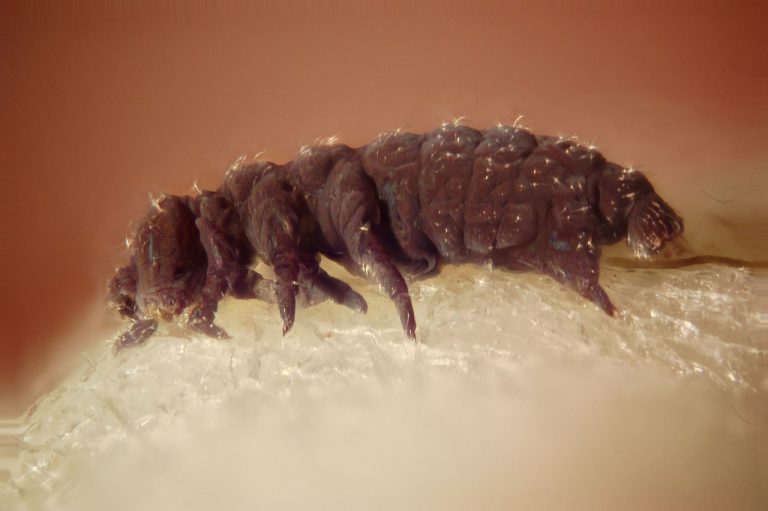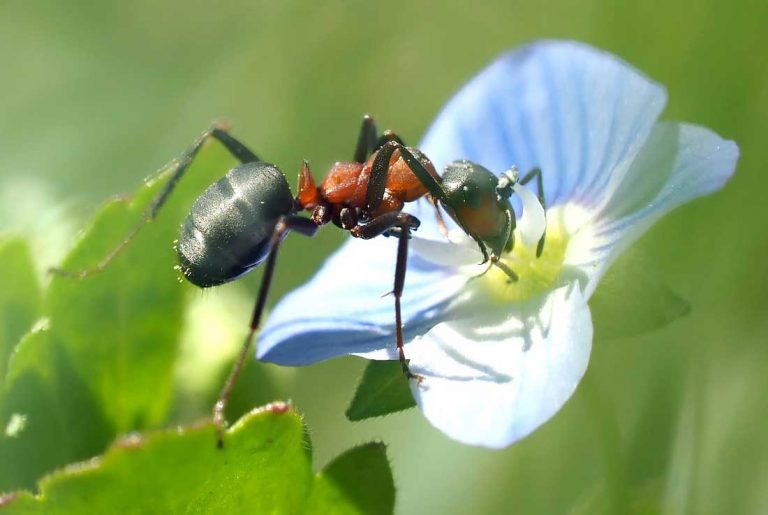Violin Mantis
Take the Trouble to Learn and They Are a Pleasure to Breed
The Violin Mantis also called wandering violin mantis, OrnateMantisor Indian Rose Mantis, bears the zoological name, Gongylus Gongylodes. This insect belongs to the order of Mantodea, known as a family of 2400 species and around 430 genres, but is particularly conspicuous by its uncanny looks with exceptionally slender legs and large appendages. Found mainly in Sri Lanka and India, the male grows only to about 8 centimeters while the female grows only to about 10 cm. The docile nature of this insect makes it a favorite pet of hobbyists.
Appearance

As the name suggests, the violin mantis resembles a violin and its peculiar body shape has the pro-thorax stretching downwards, overhanging at the sides and tapering off to a slender neck that stretches to the abdomen. This convenient shape and the leaf like projections at the joints of the legs, allows them easily to camouflage into the foliage, facilitating their hunt for flying insects. The female of the species is a mite bigger than their male counterparts are, but have only small redundant wings that do not help flying. Surprisingly, the male violin mantises fly very well. While in most of these insects an eight-segmented abdomen is the exclusive characteristic of a male, a six segment, wider abdomen alludes to a female. The females have a thin, straight and long antenna, while the males sport a feathery and split antenna.
Behavior
Tolerance is a great attribute of the violin mantis; they are communal towards each other and do not indulge in cannibalism, as some others in their species do. They rarely fight when the food is abundant. Breeding males and the nymphs apart, is a more prudent step, especially if the nymphs are in short supply. In their natural habitat one always finds them living and breeding in huge clusters without resorting to cannibalism.
Environmental conditions
Environmentally, a daytime temperature of about 30-40C is ideal, and you can provide this easily with an incandescent bulb mounted on a desk lamp above the cage. Good feeding and warmth are the two essential elements that increase a mantis’s metabolism and consequently, its growth. Humidity at around 40% suits the violin mantis as they prefer hot and dry conditions that call for little misting. Keep the enclosure properly ventilated and try your best provide twigs, flora and ornamental plants to reproduce their original habitat.
Feeding habits
You can feed the violin mantis with Fruit flies (Drosphilia hydei ) to start with, and over a period, increase the size of the feed, but restrict it only to flying insects like moths, house flies, green bottles and the like. However, feeding crickets to violin mantises is taboo.
Breeding
When it is time to breed, introduce the female mantis into the cage, and after the male ensures his own safety, he will hop on the female’s back: the mating process could continue for hours or even days. Feeding the insects adequately during mating, especially the female, can give you good results. Remove the female after completing the mating. About four weeks after mating, the female lays about 6-15 oothecae, each of which may spawn about 15-30 nymphs about a month after incubation,
Molting

The shedding process or molting, characterizes a growing violin mantis, and the just hatched nymph is the Ist Instar, and moves up an Instar with every molt. The symptoms of an upcoming molt are, inactivity, fasting and assuming a molting posture.
Conclusion
These amazing violin mantises are not for a novice hobbyist, as they demand a lot of care for successful domestic breeding. However, if you are willing to take the trouble to learn about them and their habits, including proper feeding and maintenance, they are a pleasure to breed.

Having discovered a fondness for insects while pursuing her degree in Biology, Randi Jones was quite bugged to know that people usually dismissed these little creatures as “creepy-crawlies”.







